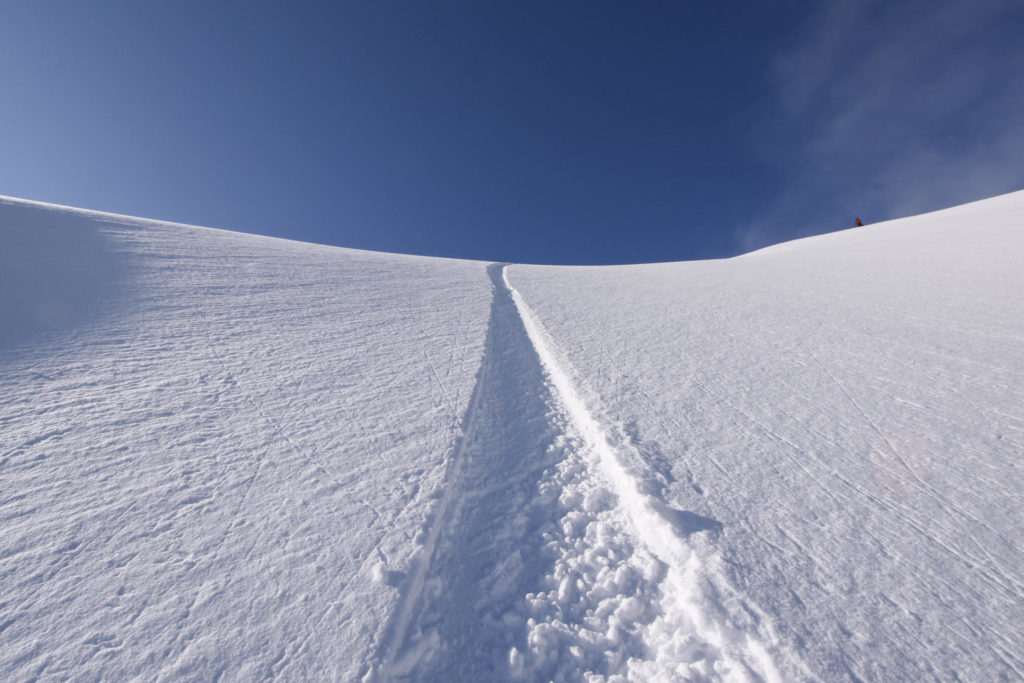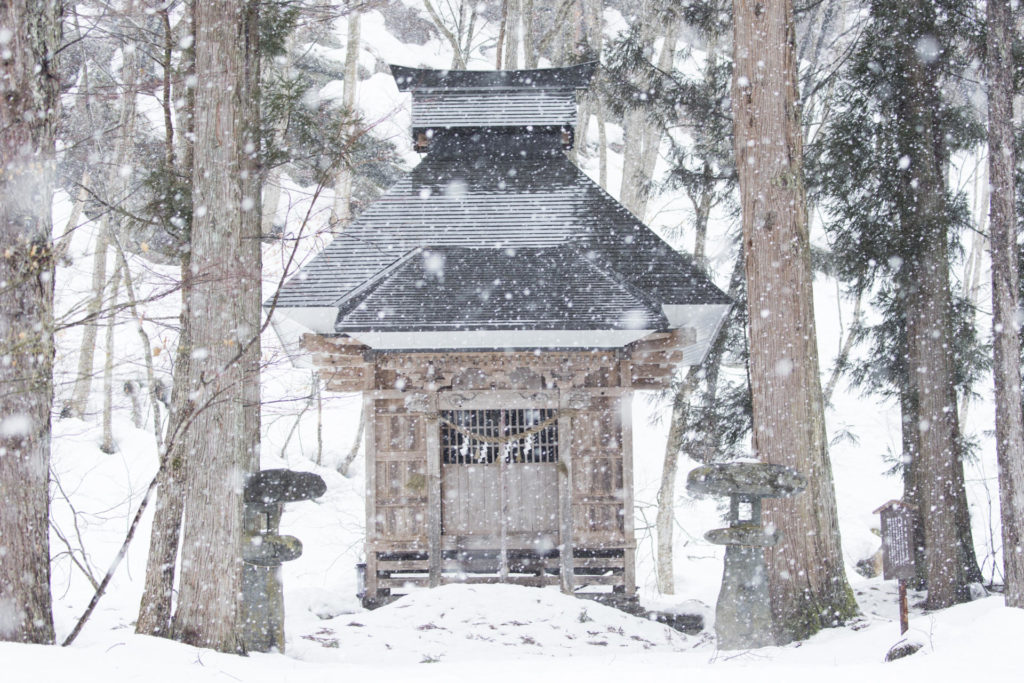If a picture speaks a thousand words, Yuske Hirota’s life is a novel.
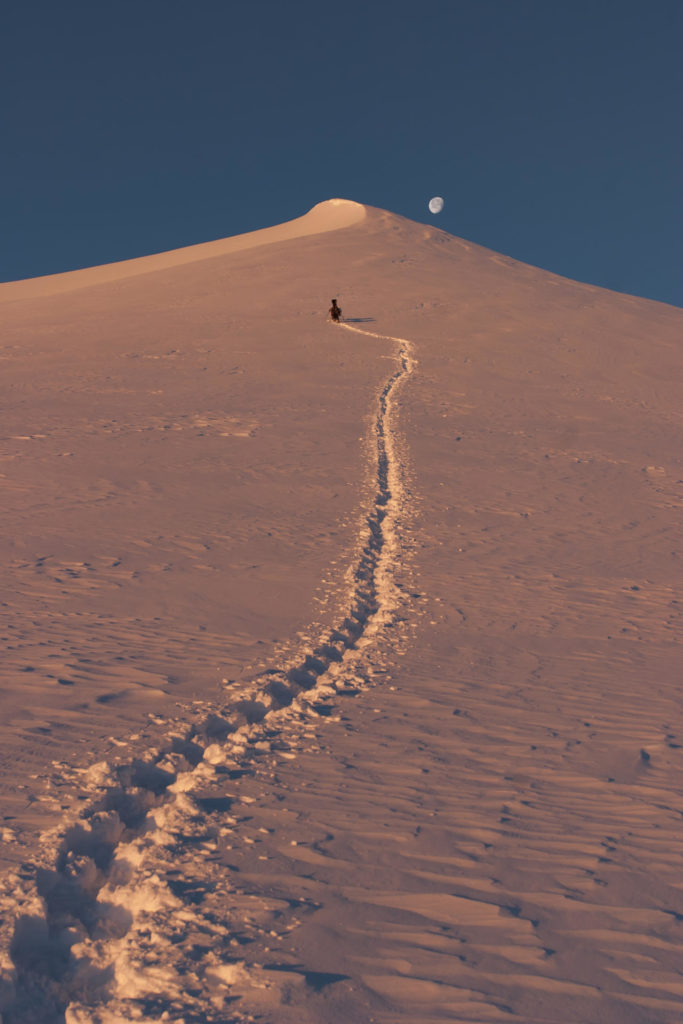
The 40-year-old photographer and backcountry guide was first drawn to mountaineering after seeing photographs of backcountry skiing in the U.S. and Europe almost two decades ago. Since then, he’s been a driving force in progressing the grassroots backcountry scene in Japan, from slow beginnings to becoming the first Japanese person to pass the Association of Canadian Mountain Guides Ski Guiding Course on a splitboard.
Rie Miyoshi: The last time we met was three years ago; you’d just returned from an Alaska expedition.
Yuske Hirota: Has it been that long? Really glad we could meet up as I’m o to Hakuba (Nagano), it’s going to be a great winter.
RM: Did you grow up in the mountains?
YH: No, I was born and raised in Tokyo. I have two brothers—I’m the middle child—and for a Japanese family back then, it was a pretty big family because most people would only have one or two kids. When we went on family trips, we would always go camping because, as you can imagine, three boys at a ryokan (traditional inn) would be expensive and chaotic.
Before skiing or mountaineering, the ocean was my playground. My mom is from Hayama, a small fishing town south of Tokyo, and my uncle is a commercial fisherman, so even though I grew up in the city, I would go to the beach and sh a lot.
My school was in Oomori, a half-hour bicycle ride to Heiwajima along Tokyo Bay. Today it’s all reclaimed land and very modern, but 30 years ago, it was nothing but grass fields and a great place to sh for suzuki (Japanese sea bass) and yellowtail. Everyday afters school, I would cycle out there, and on weekends, I would camp out alone or with friends— this is when I was 10 years old!
RM: So when did you become a mountain person?
YH: In high school I joined the mountaineering club. Every Christmas, we would go on a gasshuku (field trip) to the Japan’s Southern Alps for ten days. When I was 21, while working part-time at Montbell’s retail shop, I saw the Japanese version of Powder Magazine. It just so happened to be a photo essay on backcountry skiing in the U.S. and Europe. I didn’t even know it was possible to ski such steep runs. My heart just told me then: “This is what you need to do.” At that time there was no way to learn about backcountry skiing in Japan, so I researched private schools where I could learn mountaineering, avalanche and first aid skills. The cheapest, longest course was in Canada so I took a year o university to study abroad. When I came back, I couldn’t bring myself to go back to university, so I dropped out and apologized to my dad.
RM: Was he upset?
YH: (laughs) I don’t know, I think so. I remember he took me to an izakaya ( Japanese pub) near Tokyo Station and we shared sake and beer, and for two hours he didn’t say a single thing about this. After that, he just said “Okay, let’s go home,” so I saw that as acceptance.
I moved to Hakuba that season—this was right after the 1998 Nagano Olympics—and worked as an apprentice and assistant guide under Tomohito Tonegawa, the pioneer of backcountry skiing in Japan.
RM: Backcountry skiing has really taken o in the last 25 years, but, before that, there was yama skiing, right?
YH: Yes, but the difference is the seasons. Yama skiers ride in early to late spring and they use skinny skis to climb up and ski down the same track. It’s actually more like cross country skiing; you stay on ridges and don’t ski powder. There were no major differences between skiing and yama skiing for the longest time, because there were no chairlifts before the 1950s anyway. Today, it’s very popular with 60 to 70 year olds.
RM: What were the challenges starting out as a backcountry guide in Japan?
YH: I knew I needed more training. After four to five seasons in Hakuba, I had one incident. While guiding, one of my clients triggered a small avalanche and tumbled around 200 meters. He disappeared and I thought he had died. Fortunately he made it, but at that point I knew I had to improve my avalanche skills. I had already taken all the courses I could take here in Japan.
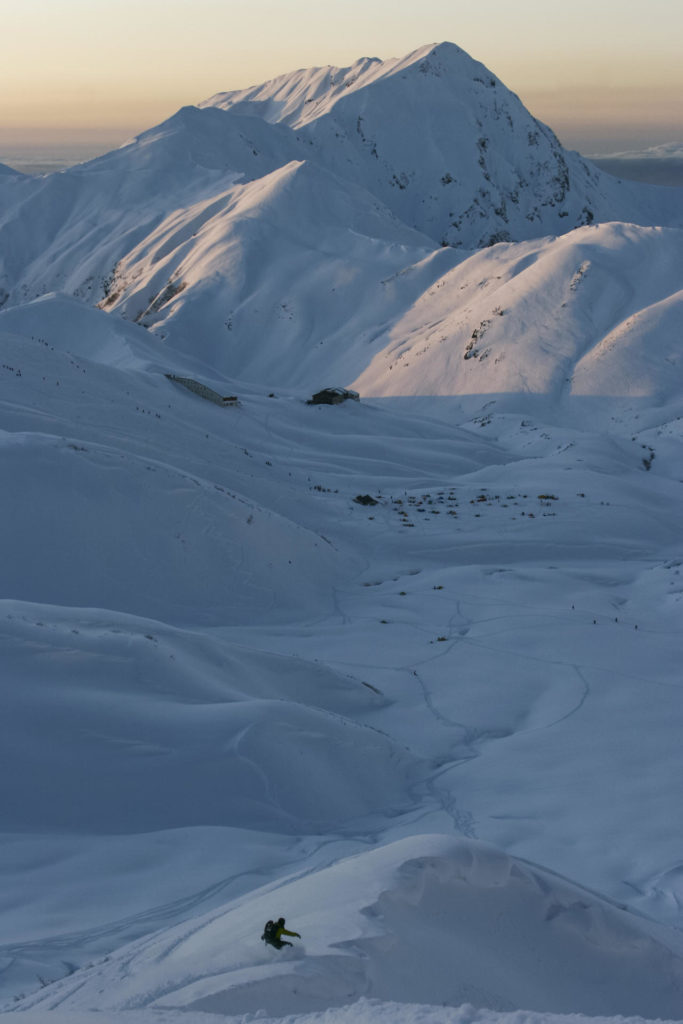
RM: What brought you back to Canada?
YH: I worked as an interpreter for the Japan Avalanche Network in Japan working with avalanche instructors we’d invite to Japan from overseas. For three years, I worked closely with John “Buff” Buffrey, an instructor from Nelson, B.C. He was the late Craig Kelly’s mentor and one of the biggest supporters of snowboarding guides in Canada, even before snowboarding was recognized as a tool for winter guiding. One day he invited me to work for him in Canada so I joined him for five seasons. That’s where I got certified as a winter guide.
RM: How difficult was it to get certified as a snowboarder?
YH: To begin with, it’s really difficult to pass the certification. The competition is very high and most of the time, you have to wait two to three years to get into the program. I was chosen as I had enough experience in Japan so they recognized me right away.
But the training was hard. There was one week of alpine exercises on a glacier with ropes, rappels and belay devices. After that, one week of ski training. There was also a lot of bias against snowboarders— when I showed up with my snowboard, the instructors looked at me and said, “What are you doing here? You’re crazy!”
Then there was yet another week of mechanized skiing using snowcats. There’s a 50% chance of passing these challenges, but if you do, you have to complete a 10-day final exam. I was really fortunate to pass on the first try.
RM: And you stuck with snowboarding…
YH: I knew snowboarding was my way, my calling. After receiving this certification, I wanted to work in Canada but this was right after the Vancouver Olympics when they really cracked down on work visas. So I moved back to Japan and have traveled to Alaska, Peru, Patagonia, New Zealand, Nepal and Canada since then.
Now I live in Tokyo, but in the winter I’m based in Hakuba when not traveling around the country with my clients. They always enjoy the winter landscape here—it’s not better or worse, just a different feeling, especially because there are more deciduous trees like buna (beech) making it feel more open. It’s always great guiding people here.
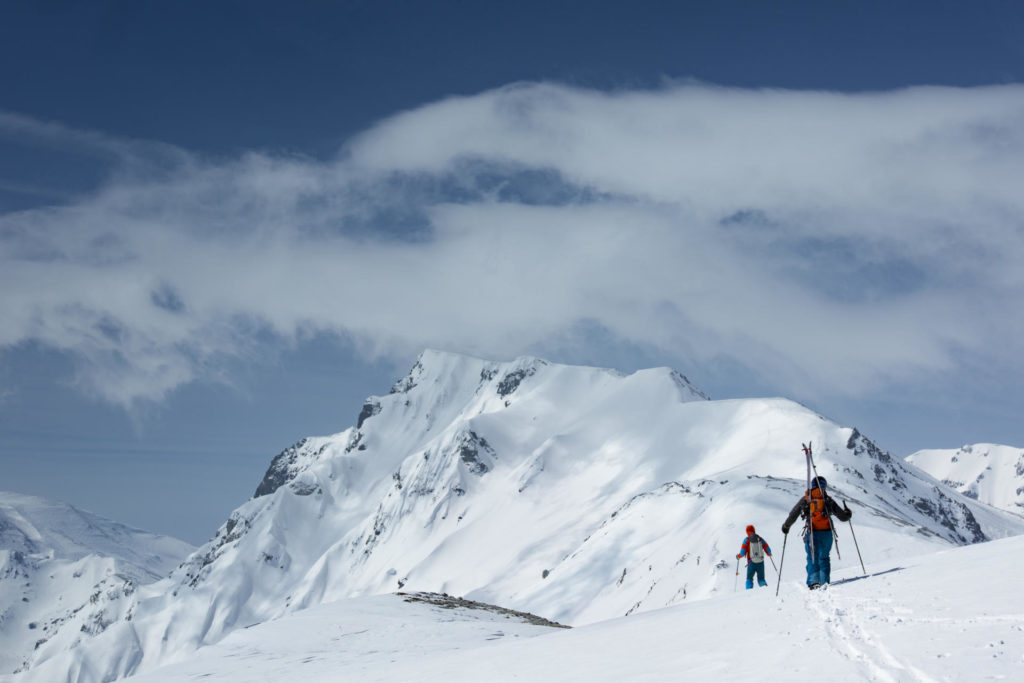
RM: Things seem to have come full circle. You started o working part-time at Montbell and now you’re their brand ambassador.
YH: Yes, I’ve been really lucky and they’re such a conscientious brand. Japan has a lot of natural disasters— floods, earthquakes and more—but every time something happens, Montbell is on the scene, helping out. During the 2011 disaster, a lot of companies in Tokyo shut down. But Montbell kept their shops open as base camps, giving tents and sleeping bags away. I talked asked them why they do what they do, and they said something that really resonated with me: “Otoko nara ichiban yari de ikana akanyaro.” It was used by the samurai who believed that when you’re in battle and have your lance with you, it’s your responsibility to be the first to take charge. Basically, spearheading the movement, especially when no one else is stepping up.
RM: It’s great to be supported by progressive-minded people. Can you tell us a bit about your guiding company—Tao of Pow—and your tours?
YH: In Japan, we have a deep association with yama, the mountains. For example, before we eat, we say “Itadakimasu.” The kanji character for this is the same one we use for “mountain peak.” This means we appreciate the mountains for providing the ingredients for our meals. Not many people know this. There’s history, nature, beautiful temples and tradition, and the yama serve as reminders of the forgotten past. It’s our responsibility to learn about these things and then pass them down to the next generation or they’ll be lost. When people come to Japan, I want them to enjoy the whole experience.
RM: Where do you go after the snow melts?
YH: I’m still be up in the mountains, either taking photos or guiding hiking tours. I write for a Japanese outdoor magazine for women called Randonnée and each issue, I focus on a particular mountain with a spiritual background to it. You know how Kyuya Fukada started the Hyakumeizan list of “100 Famous Japanese Mountains?” I’m making my own “Top 100” list, choosing mountains based on the historic culture behind them. For example, I wrote about Miwayama in Nara Prefecture. It’s only 300 meters high but is home to 3,000-year-old shrine, one of the oldest around.
RM: What number mountain are you on right now? YH: I’m on No. 42. It’s always great talking to the locals in the inaka (countryside), oftentimes, they’re the ones who introduce me to new mountains. These are the stories I like to share.
To check out more of Yuske Hirota’s photography and writing, download his new book, Yama Skiing in Japan, a bilingual photo essay of his backcountry adventures around Japan. The e-book, designed by Junko Saga, will be available on Amazon. To find out more visit him online.





